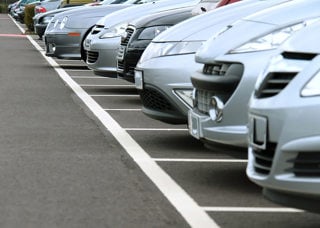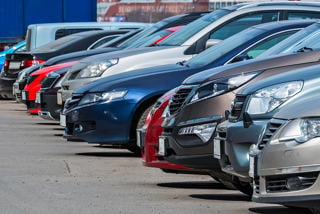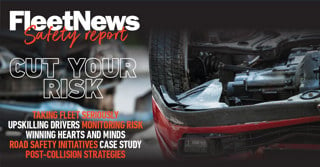UK councils are spending more than a quarter of a billion pounds a year keeping hundreds of thousands of grey fleet drivers on the road.
Local authorities in England foot three-quarters (76.3%) of the annual bill, reimbursing £209 million to more than 267,000 employees who drive their own car in the course of their work.
In Scotland, some 43,000 grey fleet drivers cost council coffers £32m, which was slightly more than the £28.9m paid out by Welsh local authorities to their 30,000-plus grey fleet drivers. Northern Irish councils have 3,106 grey fleet drivers – 1.4% of the UK total – costing £3.9m.
The figures, revealed as part of a Fleet News investigation, provide a unique insight into both the scale and cost of grey fleets operated by councils across the UK.
The data was sourced through freedom of information requests sent to 434 councils, not including parish and town councils, between July and December last year.
It shows Bournemouth Borough Council has the greatest number of grey fleet drivers, with 12,418 employees reimbursed for using their own car in the course of their work. Hampshire County Council (11,649) and Lancashire County Council (9,389) were a close second and third, respectively.
In terms of cost, councils were asked to say how much money they had reimbursed grey fleet drivers during 2013/14, including essential user allowances – lump sums paid by some councils to qualifying employees who drive their own car for work.
The UK council with the biggest grey fleet bill was Suffolk County Council which, at £7.5m, was almost twice that of the whole of Northern Ireland.
Derbyshire County Council (£5.2m) and Kent County Council (£5.07m) had the next two biggest grey fleet bills.
However, it can safely be assumed that there are substantially more than the 344,679 council grey fleet drivers Fleet News was able to identify, especially when one in six respondents (17.5%) did not know how many grey fleet drivers they had and therefore couldn’t provide a figure.
A further 8% of councils failed to respond at all, suggesting the final number could actually be closer to the half-million mark.
Grey fleet usage is particular prevalent in the public sector, with more than half (55%) of all business travel undertaken by drivers in their own private cars, according to research from Alphabet.
However, with environmental and efficiency targets to achieve, and despite what the figures suggest, public sector organisations are investigating alternative approaches to travel.
“While grey fleet remains significant within public sector organisations, the hidden financial and environmental costs, combined with concerns around duty of care, are causing more organisations to re-examine how to reduce their grey fleets and focus on vehicles that are appropriate and fit for purpose,” said Dean Hedger, head of public sector at Alphabet.
Analysts Frost and Sullivan suggest that the number of vehicles used by corporate car sharing fleets in Europe will grow 50-fold over the next few years. They say it is likely that such fleets will grow from around 2,000 today to as many as 100,000 vehicles by 2020.
Leasing companies, car clubs and daily rental companies have already developed a range of products to help drive down grey fleet usage and mitigate the risks.
Alphabet’s corporate car sharing service, AlphaCity, along with Hertz and its 24/7 offering, are among a number of operators now gaining traction in the market.
And, according to Alphabet’s survey, just under a fifth (18%) of organisations now offer their employees access to a corporate car sharing or car club service.
Hedger explained: “Many companies are now turning to us for guidance and support on how to move away from traditional methods of transportation.
"It’s clear that a ‘one size fits all’ approach is no longer desirable or workable, so we’re helping organisations to think beyond the vehicle and identify the most suitable mobility solution for the individual and the journey, whether that may be an electric vehicle, public transport or a car sharing service.
“As a result, we’re seeing the emergence of public sector organisations that are leading the way with the adoption of new and innovative mobility solutions.”
One such organisation is Hampshire County Council, which put tackling the grey fleet at the top of its fleet agenda.
Generous mileage reimbursement rates were reduced to an industry standard and company cars considered for those grey fleet drivers that cover the most miles.
It also adopted Alphabet’s corporate car-sharing scheme AlphaCity, where customers pay a standard monthly contract hire rate, which varies depending on the model, term and mileage, plus a 20-25% premium for hardware and management services.
Membership cards are provided to access the vehicle and a 24/7 customer service team deals with driver queries.
The Fleet News investigation comes in the wake of research from Lex Autolease which suggested nine million privately-owned cars are regularly used on work-related business out of a total grey fleet of 14m vehicles.
The leasing giant’s analysis showed that three-quarters (74%) of fleet managers always check insurance cover on grey fleet vehicles, but more than one in 10 (12%) said they undertook only sporadic checks.
A further 8% admitted they didn’t carry out any insurance checks at all.
This is despite the significant challenge they pose to employers in terms of their impact on the environment and employee safety.
“It appears many businesses remain oblivious to the cost challenges, environmental impact and safety risks associated with employees using their own vehicles for work purposes,” said Lex Autolease’s managing director, Tim Porter.
A key problem is understanding who is actually responsible for managing grey fleet drivers, with the grey fleet usually falling somewhere between HR and the fleet department, and usually a line manager left to enforce the rules.




















Login to comment
Comments
No comments have been made yet.